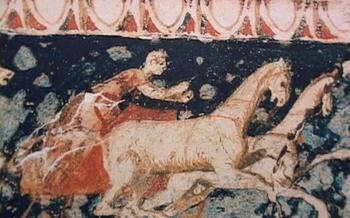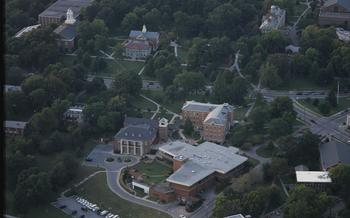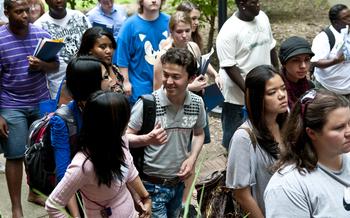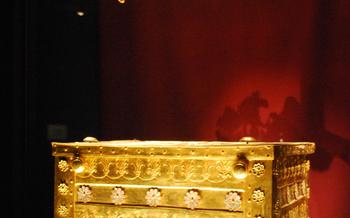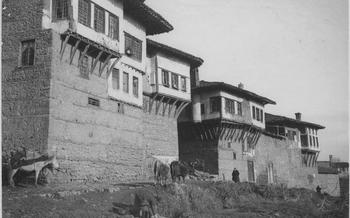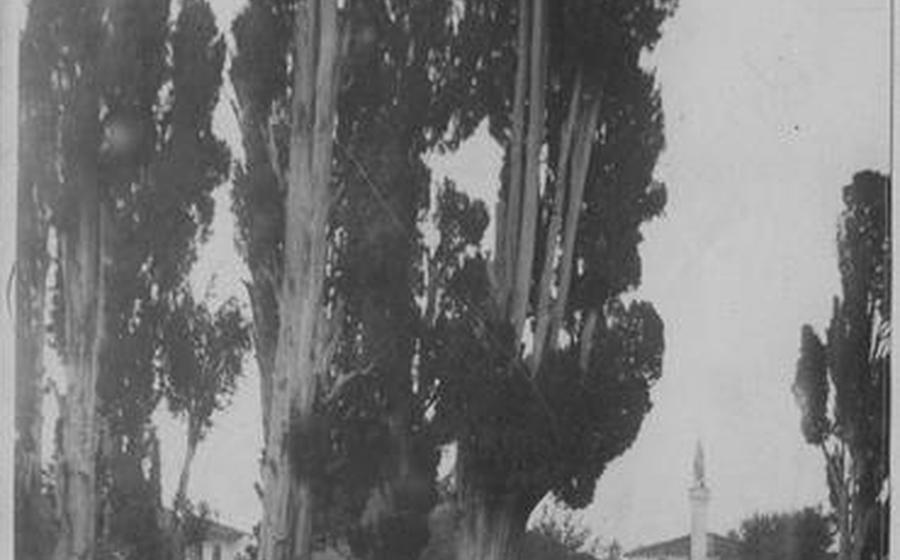
The Royal Palace of King Philip II
- Step Back in Time: Exploring the Palace Grounds
- Unraveling the Secrets of the Palace's Construction
- Royal Living: Inside the King's Private Quarters
- A Seat of Power: The Throne Room and Courtly Life
- Royal Entertainment: The Palace's Gardens and Courtyards
- Everyday Life in the Palace: Servants, Artisans, and Craftsmen
- The Palace's Role in Diplomacy and International Relations
- The Palace's Legacy: From Antiquity to the Present Day
- Tips for Visitors: Planning Your Visit to the Palace
- Must-See Highlights: Exploring the Palace's Most Notable Features
- Unforgettable Experiences: Activities and Events at the Palace
- History Comes Alive: The Palace's Connection to Ancient Macedonia
- Capture the Moment: Photography and Social Media Tips
- Insider Tip: Unveiling Hidden Gems
Step Back in Time: Exploring the Palace Grounds
As you traverse the grounds of the Royal Palace of King Philip II, you'll be transported back in time to the era of Macedonian grandeur. The palace complex boasts a well-organized layout, featuring a central courtyard surrounded by various chambers, reception halls, and living quarters. Each space holds its own unique charm and significance, offering glimpses into the daily life and activities that once took place within these walls.
The palace's grandeur is further enhanced by the exquisite artwork that adorns its walls and floors. Intricate mosaics depict mythological scenes, while frescoes showcase the artistry and storytelling skills of ancient Greek and Macedonian craftsmen. These vibrant artworks provide a glimpse into the rich cultural heritage of the period and the importance placed on aesthetics and visual expression.
The defensive structures of the palace are a testament to the strategic importance of this royal residence. Towers and fortifications stand guard, silently recounting tales of battles fought and sieges endured. These architectural features offer a glimpse into the security measures employed by the Macedonian rulers to protect their kingdom from external threats.
The palace's connection to the ancient city of Veria is evident in its proximity to other significant historical sites. As you explore the palace grounds, you'll find yourself immersed in the rich tapestry of Veria's past, where the legacy of King Philip II and the Macedonian kingdom is still palpable.
Unraveling the Secrets of the Palace's Construction
The construction of the Royal Palace of King Philip II showcased the architectural prowess and ingenuity of the ancient Macedonians. Local materials, such as limestone and marble, were skillfully employed, while techniques like ashlar masonry demonstrated the builders' mastery. The palace's design blended Greek and Persian influences, reflecting the cultural exchange that characterized the Hellenistic era. Skilled artisans and craftsmen meticulously crafted intricate details, from the Doric columns to the elaborate mosaics, leaving an enduring legacy of their artistry. The palace's construction not only served as a testament to the wealth and power of the Macedonian kingdom but also highlighted the importance placed on aesthetics and grandeur in ancient Macedonian society.
Royal Living: Inside the King's Private Quarters
The interiors of the Royal Palace of King Philip II were a testament to the opulence and luxury enjoyed by the Macedonian royalty. Marble floors, adorned with intricate mosaics, gleamed beneath the feet of the king and his guests, while the walls were painted with vibrant frescoes depicting scenes from mythology and nature. Ornate furnishings, crafted from exotic woods and adorned with precious metals, filled the palace's vast chambers, creating an atmosphere of regal splendor.
The king's private chambers, located in the heart of the palace, were the epitome of comfort and privacy. His bedroom featured a grand bed with a carved wooden frame and a soft mattress covered in sumptuous fabrics. Beside the bed stood a small table, inlaid with ivory and gold, where the king could read or write. The walls were adorned with tapestries depicting scenes of battle and conquest, reflecting the king's martial prowess.
The king's study was a place of contemplation and work. A large desk, made from a single slab of marble, dominated the room. Papyrus scrolls, ink pots, and other writing implements were neatly arranged on its surface, indicating the king's attention to detail and his commitment to governance. A comfortable chair, upholstered in soft leather, invited the king to sit and ponder the affairs of his kingdom.
The king's dining room was a place of both nourishment and entertainment. A long table, capable of seating dozens of guests, was surrounded by intricately carved chairs. The table was always laden with a feast of the finest foods and wines, prepared by the palace's skilled chefs. The king and his guests would recline on the chairs, enjoying the delicious cuisine and engaging in lively conversation.
These private quarters offer a glimpse into the personal life of King Philip II, revealing his tastes, his habits, and his daily routine. They stand as a testament to the wealth, power, and opulence that characterized the Macedonian monarchy during its golden age.
A Seat of Power: The Throne Room and Courtly Life
The throne room was the heart of the Royal Palace of King Philip II, a symbol of his authority and the centralized nature of Macedonian rule. This grand and imposing chamber was where the king held court, received visitors, and conducted official business. Elaborate ceremonies and rituals took place within its walls, showcasing the power and prestige of the Macedonian monarchy. The throne itself, placed on a raised platform, was a focal point of the room, adorned with intricate carvings and precious materials. Here, the king would preside over meetings, issue decrees, and make important decisions that shaped the fate of his kingdom. The throne room was not just a physical space but a symbolic representation of the king's absolute power and the centralized nature of Macedonian governance.
Royal Entertainment: The Palace's Gardens and Courtyards
The Royal Palace of King Philip II was not just a seat of power but also a place of leisure and entertainment. The palace featured extensive gardens and courtyards that served as serene and inviting spaces for the king, his family, and guests to relax, unwind, and enjoy themselves.
These gardens were meticulously designed to create a harmonious blend of nature and art. Visitors could stroll through paths lined with a variety of plants, flowers, and trees, each carefully chosen for its beauty and fragrance. The gardens were adorned with water features, fountains, and pools, which added to the tranquil and refreshing atmosphere.
The courtyards, which were enclosed by colonnades or walls, provided a more private and intimate setting for royal entertainment. These spaces were often used for hosting banquets, receptions, and other social gatherings. The courtyards were lavishly decorated with mosaics, frescoes, and sculptures, creating a visually stunning backdrop for these events.
In these gardens and courtyards, the king and his guests could indulge in a variety of leisurely pursuits. They could take leisurely walks, engage in philosophical discussions, or simply relax and enjoy the beauty of their surroundings. The gardens and courtyards were also used for hosting musical performances, theatrical productions, and other forms of entertainment, providing a rich cultural experience for the palace's inhabitants.
These gardens and courtyards were not just places of pleasure but also reflections of Hellenistic aesthetics and the pursuit of a balanced and harmonious life. They embodied the Greek ideal of combining beauty with functionality, creating spaces that were both aesthetically pleasing and conducive to relaxation and enjoyment.
Everyday Life in the Palace: Servants, Artisans, and Craftsmen
The Royal Palace of King Philip II was not just a residence for the king and his family but also a bustling hub of activity, teeming with servants, artisans, and craftsmen who played vital roles in its functioning. Each member of this diverse community had their designated responsibilities, ensuring the smooth operation of the palace.
Servants were essential to the daily upkeep of the palace. They performed various tasks, from cleaning and cooking to serving meals and attending to the needs of the royal family and their guests. Their tireless efforts ensured that the palace remained a comfortable and well-maintained living space.
Artisans and craftsmen, with their skilled hands and creative minds, contributed to the palace's beauty and grandeur. They crafted intricate mosaics, frescoes, and sculptures that adorned the palace walls and floors, transforming it into a masterpiece of Hellenistic art. Their expertise extended to woodwork, metalworking, and jewelry making, creating exquisite objects that reflected the wealth and opulence of the Macedonian court.
The palace was also a center of industry, with workshops and storerooms where artisans and craftsmen plied their trades. The sound of hammers striking metal, chisels carving stone, and looms weaving cloth filled the air, creating a vibrant symphony of industry. These skilled individuals worked diligently to produce everything from clothing and furniture to weapons and armor, ensuring that the palace and its inhabitants had all they needed.
The interdependence of the palace's inhabitants was a crucial aspect of its functioning. The servants, artisans, and craftsmen relied on each other's skills and labor to create a harmonious and efficient living environment. Their collective efforts contributed to the palace's reputation as a seat of power and a symbol of Macedonian grandeur.
The Palace's Role in Diplomacy and International Relations
The Royal Palace of King Philip II served as a crucial venue for diplomatic meetings and negotiations with foreign dignitaries, reflecting Macedonia's prominent role in international relations during the Hellenistic period. Elaborate banquets and ceremonies were held within the palace's grand halls to impress and entertain visitors, showcasing the kingdom's wealth, power, and hospitality. Through these diplomatic interactions, the palace played a pivotal role in shaping Macedonia's foreign policy and maintaining alliances with neighboring states. The palace's grandeur and opulence served as a powerful symbol of Macedonia's status and prestige on the international stage, solidifying its position as a major player in the ancient world.
The Palace's Legacy: From Antiquity to the Present Day
The grandeur and legacy of the Royal Palace of King Philip II extend far beyond its ancient origins. After the fall of the Macedonian kingdom, the palace was gradually abandoned and fell into ruin, becoming a forgotten relic of a bygone era. In the 19th century, however, the palace ruins were rediscovered, sparking renewed interest in this significant historical site. Subsequent excavations and archaeological investigations have shed light on the palace's rich history and grandeur, revealing its intricate architecture, elaborate artwork, and the daily life of its inhabitants.
Today, the Royal Palace of King Philip II stands as a UNESCO World Heritage Site, recognized for its exceptional cultural and historical significance. The palace's remarkably preserved ruins offer a glimpse into the grandeur of ancient Macedonia, showcasing the architectural prowess and artistic achievements of the Hellenistic period. Visitors can wander among the palace's courtyards, admire the remnants of its once-ornate frescoes and mosaics, and marvel at the ingenuity of its defensive structures. The palace's legacy lives on, serving as a testament to the enduring power and influence of the Macedonian kingdom and its legendary ruler, King Philip II.
Tips for Visitors: Planning Your Visit to the Palace
Tips for Visitors: Planning Your Visit to the Palace
To make the most of your visit to the Royal Palace of King Philip II, here are some practical tips to consider:
- Opening Hours and Admission Fees:
- The palace is generally open to the public from Tuesday to Sunday, with specific hours varying depending on the season.
-
Admission fees are typically charged and may include discounts for students, seniors, and families.
-
Guided Tours:
- Enhance your visit by booking a guided tour led by knowledgeable experts.
-
Tours are often available in multiple languages and provide in-depth insights into the palace's history, architecture, and significance.
-
Recommended Times to Visit:
- Avoid peak tourist season and large crowds by planning your visit during the shoulder months (April-May and September-October).
-
Early mornings and late afternoons offer more pleasant temperatures and fewer visitors.
-
Visitor Facilities:
- Parking facilities are available near the palace, ensuring convenient access for visitors arriving by car.
-
Restrooms and visitor centers are located within the palace grounds, providing essential amenities for your comfort.
-
Accessibility:
- The palace strives to be accessible to visitors with disabilities or special needs.
- Accessible pathways and ramps are available, and wheelchairs can be rented on-site.
Must-See Highlights: Exploring the Palace's Most Notable Features
As you explore the Royal Palace of King Philip II, certain features stand out as must-see highlights that encapsulate the grandeur and significance of this ancient marvel.
-
The Grand Entrance and Monumental Gateway: The palace's entrance is a testament to its impressive scale and grandeur. Adorned with intricate carvings and towering columns, it sets the stage for the wonders that await within.
-
The Impressive Peristyle Courtyard: Step into the peristyle courtyard, a breathtaking open space surrounded by Doric columns. This central courtyard served as a gathering place and a symbol of the palace's power and opulence.
-
The Well-Preserved Royal Tombs: The palace complex is home to several well-preserved royal tombs, offering a glimpse into the funerary practices and beliefs of the Macedonian royalty. These tombs are adorned with elaborate decorations and inscriptions, providing valuable insights into the lives and legacies of the palace's inhabitants.
-
The Remnants of the Palace's Impressive Fortifications: The palace's defensive structures, including towers and fortifications, stand as a testament to the strategic importance of this royal residence. Explore these remnants to gain a deeper understanding of the security measures employed to protect the palace and its occupants.
Unforgettable Experiences: Activities and Events at the Palace
The Royal Palace of King Philip II offers a range of activities and events that bring history to life and create unforgettable experiences for visitors of all ages.
-
Join a guided tour led by knowledgeable experts who will share fascinating insights into the palace's history, architecture, and significance. These tours offer an immersive and educational journey through the palace's grand halls and chambers.
-
Participate in educational workshops and programs designed for families and children. These interactive sessions provide hands-on learning experiences, allowing visitors to explore the palace's past through creative activities, storytelling, and crafts.
-
Enjoy cultural performances, concerts, and exhibitions held at the palace throughout the year. These events showcase the rich cultural heritage of ancient Macedonia and feature talented local and international artists.
-
Take advantage of special events and festivals that celebrate the palace's legacy and traditions. These events often include historical reenactments, traditional music and dance performances, and themed activities that immerse visitors in the world of ancient Macedonia.
History Comes Alive: The Palace's Connection to Ancient Macedonia
The Royal Palace of King Philip II offers a tangible connection to the vibrant and influential world of ancient Macedonia. As you explore the palace's ruins, imagine yourself transported back in time to the era of Alexander the Great, whose father, King Philip II, played a pivotal role in shaping the course of ancient Greek history. Delve into the broader context of Macedonian history and discover how this kingdom rose to prominence, becoming a dominant force in the ancient world. Visit nearby historical sites, such as the ancient city of Veria, to gain a deeper understanding of the region's rich cultural heritage. Through museums, theaters, and other cultural venues, immerse yourself in the captivating world of ancient Macedonia, where the legacy of King Philip II and his kingdom continues to inspire and fascinate.
Capture the Moment: Photography and Social Media Tips
As you explore the grandeur of the Royal Palace of King Philip II, don't forget to capture the moment through photography. Share your experiences and stunning photos on social media using relevant hashtags like #RoyalPalaceVeria, #MacedonianHistory, and #AncientGreece.
Make the most of the natural lighting conditions to enhance your photographs. The golden hues of sunrise and sunset cast a magical glow on the palace's ancient stones. Experiment with different angles and perspectives to showcase the palace's architectural details and its majestic presence.
Respect the guidelines and restrictions regarding photography within the palace grounds. Some areas may have limitations or require special permission for photography. By following the rules, you can ensure the preservation of this historical site for future generations.
Capture unique perspectives and details that reveal the palace's grandeur and beauty. Focus on intricate carvings, mosaic patterns, and architectural elements that tell a story of the palace's past. Share these unique shots to give your followers a glimpse into the hidden treasures of this ancient wonder.
Insider Tip: Unveiling Hidden Gems
Beyond the well-trodden paths of the Royal Palace of King Philip II, there lies a world of hidden treasures waiting to be discovered. Venture into the depths of the palace and uncover its secret chambers and subterranean tunnels, whispering tales of a bygone era. Seek out secluded corners and tranquil spots, away from the throngs of visitors, to immerse yourself in the palace's serene atmosphere.
Engage with local experts or guides who possess a wealth of knowledge about the palace's hidden stories. They can unlock the secrets of forgotten rooms, reveal intriguing anecdotes, and provide insights into the lives of those who once inhabited these grand halls.
Step outside the boundaries of the palace grounds and explore the surrounding area, where hidden gems await. Discover ancient ruins, picturesque villages, and natural wonders that offer a glimpse into the rich tapestry of the region's history and culture. Let your curiosity guide you as you uncover the hidden treasures that lie beyond the walls of the palace.
